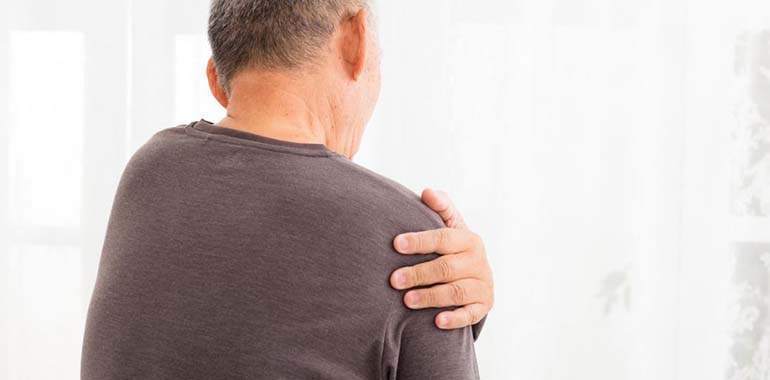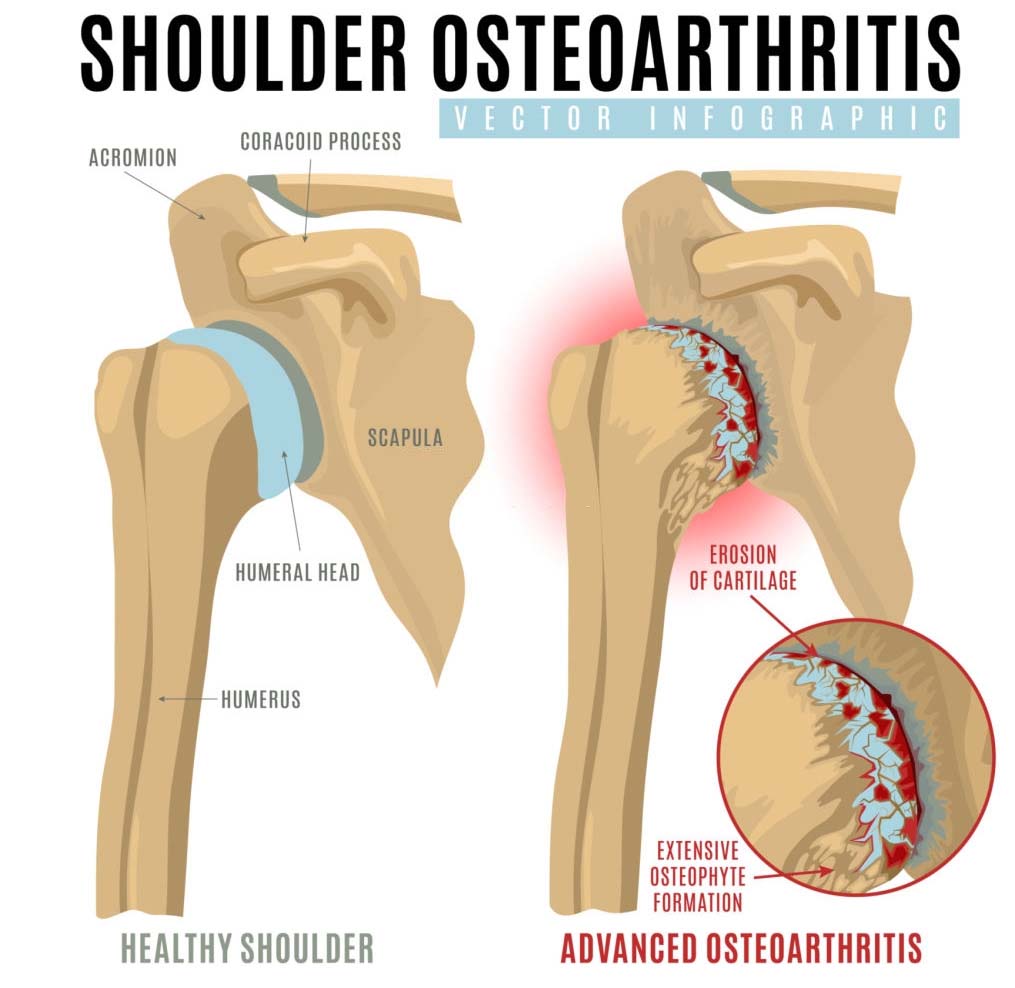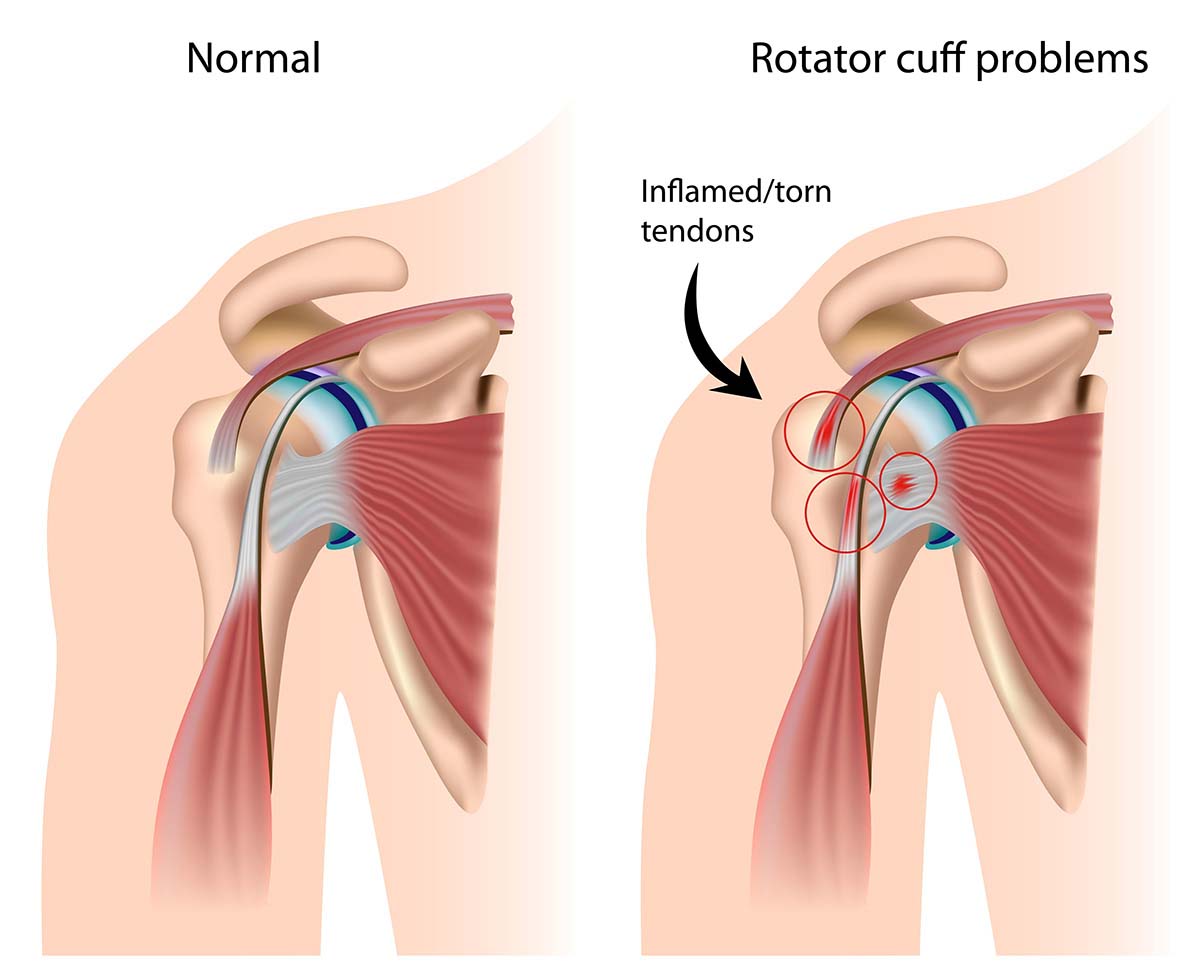
Whether acute (from an injury) or chronic (due to long-term overuse), shoulder pain can be very debilitating. Many conditions affecting the shoulder can be treated non-surgically; however, shoulder surgery is an excellent option for those who have experienced a serious problem and need to regain mobility. Dr. Jay Shah uses a variety of treatment methods for shoulder pain, including surgical and nonsurgical options.
Arthritis, which is loss of the normal cartilage, or smooth surfaces that line your shoulder joint, makes moving your shoulder and arm painful. In addition to pain, arthritis inflammation can cause swelling and joint damage. Types of shoulder arthritis include:

Treatment options include
Frozen shoulder occurs when the capsule of connective tissue that surrounds the shoulder thickens and contracts, leading to stiffness and shoulder pain from restricted movement
Symptoms: Intense pain and restriction of pain followed by phase of minimal pain but restriction of movement followed by thawing phase. Delay in seeking treatment leads to capsular contracture, disuse atrophy and permanent reduction in movement.
Initial treatment includes pain management by medications and/or joint injections, followed by intense physical therapy protocol. If symptoms persist manipulation under anesthesia and/or arthroscopy adhesiolysis may be carried out.
Three bones form the shoulder joint: the collarbone, the upper arm bone, and the shoulder blade. Together, these bones give the shoulder its wide range of motion. Attached to the shoulder is a group of muscles known collectively as the rotator cuff. These keep your arm in place while allowing it to move up and around. Rotator cuff disorders include:
Tendonitis and bursitis, both inflammatory conditions, are the most common causes of shoulder pain and stiffness. They can result from repetitive motion, such as in sports, or from a serious, sudden injury. The conditions are most common in adults older than 40, as the tendons have aged and are more susceptible to injury.
Rotator cuff tears are a common cause of shoulder pain and disability in adults and can seriously inhibit many daily activities, like combing your hair or getting dressed. This type of injury typically results from a wearing down of the tendon, which occurs slowly over time, but it can also be caused by a sudden trauma.

Treatment:
Non Surgical :Because the shoulder joint is so mobile, it can be very easy to dislocate the bone from the socket. The top of the upper arm bone (humerus) can partially or completely come out of the socket (glenoid).
This occurs when the outer (lateral) end of the clavicle (collar bone) seperates from the acromion (Part of shoulder blade). Depending on the nature of trauma the dislocation can vary from a mild to severe dissociation. Usually in the lower grades (types 1&2), non surgical therapy (Rest, medications, physical therapy) is needed. Surgical AC joint Reconstructions are done for the higher grades of injury or when non surgical treatment fails.
Fractures are broken bones and those that affect the shoulder typically involve the
Shoulder instability develops when your muscles and ligaments are not strong enough to hold the shoulder bones securely in the socket. This can lead to multiple painful shoulder dislocations or prevent you from using the shoulder or lifting your arm. Shoulder instability can develop as a result of:
Surgical Treatment for Traumatic Recurrent Shoulder Dislocations/Instability: Arthroscopy Bankart’s repair or Latarjet procedure.
For patients with habitual non traumatic dislocations, ligamentous laxity or muscle patterning disorders surgical treatments do not have positive outcomes and continuous physiotherapy and rehabilitation will be required.
Condition caused by excessive rubbing of the shoulder muscles with the under surface of acromion. This leads to pain especially on activity. Treatment is focused on reducing inflammation and physical therapy. Arthroscopy procedures are useful in intractable impingement and in Type 2/3 acromion morphology.
Injury to the labrum surrounding the glenoid is termed as a SLAP tear (Superior Labrum Anterior and Posterior). Cause of a SLAP tear can be traumatic in nature. It is also common in athletes engaged in repetitive overhead sports (eg throwing athletes). Many a times it can occur due to degeneration of the labrum. Symptoms: Pain ,especially with overhead activity, Reduced range of movement, difficulty throwing.